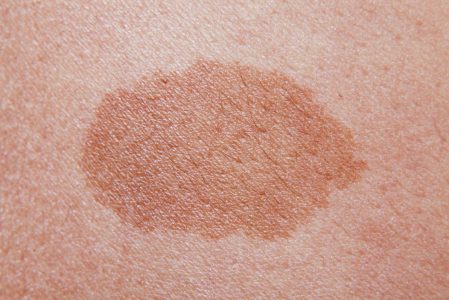What are birthmarks?
A birthmark appears as a spot, patch, or lump that looks different from the rest of your baby’s skin. You may see this when your baby is born or shortly after birth. Some birthmarks become more visible when your child is older or even during adolescence.
Certain types of birthmarks, such as Mongolian spots or hemangioma, often fade on their own. Others, such as port-wine stains or congenital moles, tend to remain unless treated.
What causes a birthmark?
Most birthmarks are sporadic occurrences. This means that they occur randomly and are not due to inherited diseases. Birthmarks may rarely be part of a syndrome. In this case, the birthmark may be part of a group of signs and symptoms that occur together and characterise a particular condition.
Birthmarks are not due to the actions or type of food consumed by the parents during conception and pregnancy.
What are some common types of birthmarks that can benefit from treatment?
Portwine stain
This birthmark appears as a flat patch that is darker than the rest of your child’s skin. The colour ranges from light to dark brown. Most children have only one spot. If your child has six or more café-au-lait spots, it is important to have an assessment by a dermatologist.
This birthmark appears as a flat patch that is darker than the rest of your child’s skin. The colour ranges from light to dark brown. Most children have only one spot. If your child has six or more café-au-lait spots, it is important to have an assessment by a dermatologist.
Café-au-lait spot
It looks like a pinkish-red patch at birth and will not go away. The birthmark will darken and become thicker as the child grows. Laser treatment during infancy and early childhood give optimal results.
Congenital moles
A mole can appear on the skin as a small spot or cover a large area of skin. Moles come in many colours, but most are brown or tan. When a person is born with a mole, the mole is called a congenital mole. These moles vary in size from small to giant. Having a giant congenital mole increases a person’s risk of developing melanoma.
A mole can appear on the skin as a small spot or cover a large area of skin. Moles come in many colours, but most are brown or tan. When a person is born with a mole, the mole is called a congenital mole. These moles vary in size from small to giant. Having a giant congenital mole increases a person’s risk of developing melanoma.
A person with multiple congenital moles or giant congenital moles needs a regular skin examination to check the moles. Some of the moles may be removed for examination if needed.
Epidermal naevus
An epidermal naevus is a birthmark due to an overgrowth of the epidermis (the outermost layer of skin). Most are present at birth or develop during childhood. When they first appear in infancy, they are flat and brown. As the child age, they become thick and warty. Rarely, epidermal naevus may be extensive and part of a syndrome.
An epidermal naevus is a birthmark due to an overgrowth of the epidermis (the outermost layer of skin). Most are present at birth or develop during childhood. When they first appear in infancy, they are flat and brown. As the child age, they become thick and warty. Rarely, epidermal naevus may be extensive and part of a syndrome.
Naevus of Ota
Naevus of Ota is a birthmark that causes a pigmented patch on the face. The eyelids, forehead, temple, cheek, and nose are some commonly affected areas. About half of people with this condition have hyperpigmentation in their eyes as well.
Naevus of Ota is a birthmark that causes a pigmented patch on the face. The eyelids, forehead, temple, cheek, and nose are some commonly affected areas. About half of people with this condition have hyperpigmentation in their eyes as well.
Naevus sebaceous
Naevus sebaceous is a birthmark most often found on the scalp, but may also occur on the face, neck or forehead. It appears as a hairless patch at birth or in infancy. It becomes more pronounced around adolescence, appearing yellowish, bumpy or warty. Sometimes, a skin tumour or skin cancer can arise within a naevus sebaceous.
Naevus sebaceous is a birthmark most often found on the scalp, but may also occur on the face, neck or forehead. It appears as a hairless patch at birth or in infancy. It becomes more pronounced around adolescence, appearing yellowish, bumpy or warty. Sometimes, a skin tumour or skin cancer can arise within a naevus sebaceous.
What should I do if I have a birthmark?
Some birthmarks need to be followed up or treated to prevent future complications. Birthmarks may also be treated for cosmetic reasons especially if they appear on visible parts of the body.
What are the treatment options of birthmarks?
For more information on treatment options of Birthmarks, check out the following





